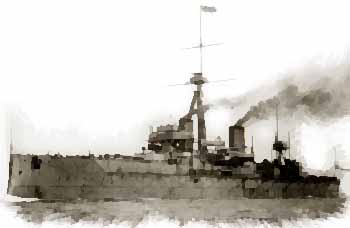- Joined
- 1 February 2011
- Messages
- 2,615
- Reaction score
- 2,556
I've found this article in the Warship International, Vol. 22, No. 2 (1985) about Some French Fast Battleships—That Might Have Been:
These are some interesting proposals from the Naval College graduates.
The two battlecruiser designs mentioned at the end were Georges Edmond Just Durand-Viel Projects A and B
These proposals was from 1913-14.
I wonder if anybody here knows more about these proposals.
Of the various studies submitted by the students of the Naval College at the beginning of 1913, the Durand-Viel project is the only one to have come down through the years to us. There is, however, an analysis of these studies as a whole, prepared by the General Staff (4th Section) in June, 1914 when consideration was being given at high- level to a new type of capital ship for the fleet. We shall first of all give the general lines of the General Staffs comments and the conclusions may be com- pared with what we have already written about the Lion class battleships. All but two officers worked on a normal displacement of about 27,500 tons: this was, in any case, the basic figure that had been suggested to the students. Only one officer had favored a battle-cruiser - this was Lieutenant de Vaisseau Durand-Viel. We will examine his design later.
According to the future graduates of the Naval College, fast battleships would be used in action as the maneuvering force with sufficient speed to allow the execution of wing movements with 20 knot squadrons and to counter encircling movements by battlecruisers.
Opinions differed as to main armament and was divided as follows:
a) Slow battleships:
32,000 tons and 10 x 380mm (five twin turrets)
29,000 tons and 9 x 380mm (three triple turrets)
30,000 tons and 16 x 340mm quadruple turrets).
The fourth candidate had retained in his design the displacement and armament of the Normandies.
b) Fast battleships: 27,500 tons - two with 10 x 380mm (two quadruple and one twin turret), the twin turret being either superimposed over the forward quadruple or placed amidships.
Three designs had 14 x 340mm:
1) two quadruple and two triple turrets, the two latter being amidships.
2) three quadruple with one twin superimposed over the forward quadruple.
3) same as 2) but with the twin superimposed over the after quadruple.
Eight officers had retained the Normandie armament (12 x 340mm) and its distribution in three quadruple turrets.
c) Battlecruisers: 8 x 340mm in two quadruple turrets or, better still, if possible: 8 x 370mm.
Fourteen officers out of seventeen had therefore chosen the 340mm gun. This caliber, they said, permitted action to be engaged with decisive results at distances that were at the limit of visibility in fine weather in the Mediterranean. It was also maintained that battle ranges of about 15,000 meters were not normal battle ranges, meaning that battle at such long range would not be the choice of a leader animated by the proper offensive spirit. On the other hand, there might be some hesitation in increasing the caliber of the armament as this form of progress implies ever- increasing displacements and seemed acceptable only if it did not involve a marked reduction in the number of guns mounted.
These are some interesting proposals from the Naval College graduates.
The two battlecruiser designs mentioned at the end were Georges Edmond Just Durand-Viel Projects A and B
These proposals was from 1913-14.
I wonder if anybody here knows more about these proposals.

